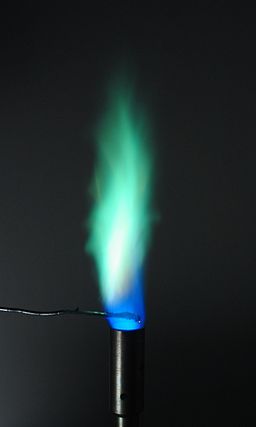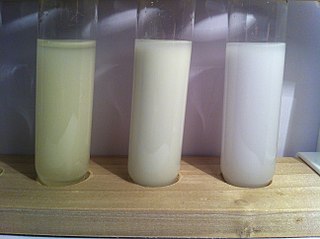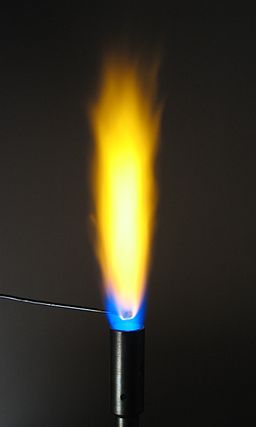10 minutes maximum! |
 Søren Wedel Nielsen | CC-BY-SA 3.0 |
|||||||||||||||||||||||||||||||
|
1. Select the row showing the correct flame colours for the following ions: |
||||||||||||||||||||||||||||||||
| ||||||||||||||||||||||||||||||||
2. Unknown substance Z fizzed when acid was added producing a gas which turned limewater milky. The ion confirmed as being present in Z was:
| ||||||||||||||||||||||||||||||||
3. Chloride, bromide, and iodide ions in solution can be tested for by adding ... |
 Cychr | CC-BY-SA 3.0 |
|||||||||||||||||||||||||||||||
| ||||||||||||||||||||||||||||||||
4. A student was given an unknown solid, P, to identify. She dissolved a small sample of the solid in water and tested as follows:
|
||||||||||||||||||||||||||||||||
She correctly concluded that solid P was ...
| ||||||||||||||||||||||||||||||||
| 5. Substance X produced a yellow precipitate when added to silver nitrate solution.
This yellow precipitate is ...
| ||||||||||||||||||||||||||||||||
| 6. A student made a sample of lithium sulfate solution. She tested her solution by adding a few drops of acidified barium chloride solution to it.
The observation she made and the name of the substance responsible for this observation is ... |
||||||||||||||||||||||||||||||||
|
||||||||||||||||||||||||||||||||
7. Identify the white solid which gave the following results when tested:
|
||||||||||||||||||||||||||||||||
| ||||||||||||||||||||||||||||||||
8. A solution was tested as follows to identify the negative ion present:
|
||||||||||||||||||||||||||||||||
The negative ion present could be ...
| ||||||||||||||||||||||||||||||||
9-10. A teacher suspected that a sodium sulfate solution had been contaminated.
|
 Søren Wedel Nielsen | CC-BY-SA 3.0 |
|||||||||||||||||||||||||||||||
9. Identify the positive ion contaminating the sodium sulfate solution.
| ||||||||||||||||||||||||||||||||
10. Identify the negative ion contaminating the sodium sulfate solution.
| ||||||||||||||||||||||||||||||||